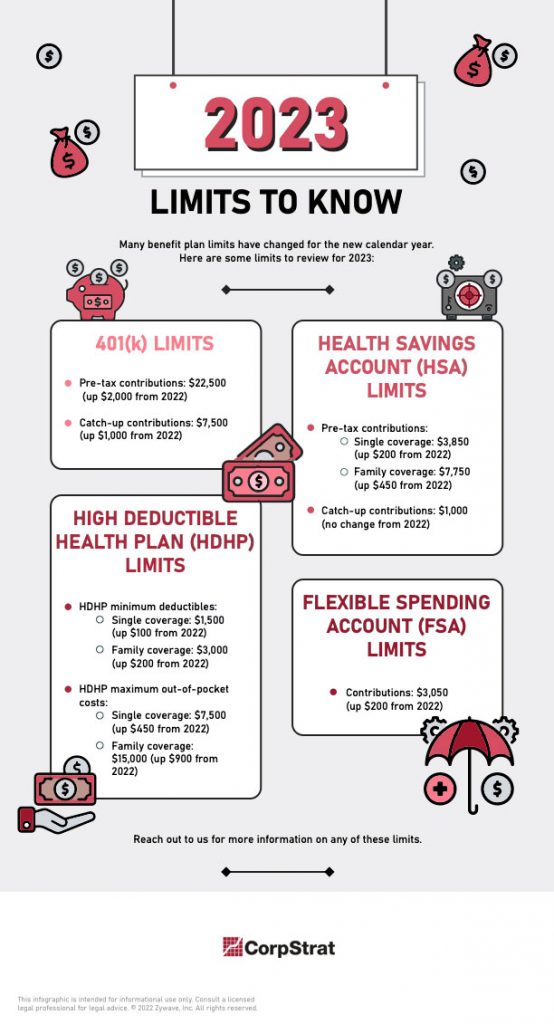
Although some organizations may cut jobs or reduce hiring as economic growth slows, some are paying higher employee wages to keep and win top talent. More than ever, compensation is top of mind for employers and employees alike. Today, workers can demand higher pay and better benefits as many employers face a worker shortage and struggle with employee attraction and retention. The latest compensation trends aren’t just about wage increases, but also workers wanting to get paid differently, be compensated based on their work, and receive more pay transparency.
Organizations are facing evolving talent challenges. The COVID-19 pandemic has given workers time to reflect on their jobs and consider opportunities with a fresh perspective. On top of that, both employers and employees are feeling the financial strain of record-high inflation. When employees feel adequately compensated for their job, they’re more motivated to give it their all. Proper compensation demonstrates to employees that they’re valued as workers and humans. This article explores today’s top compensation trends and how employers can best compete in the labor market looking ahead to 2023.
1. Salary Hikes
The reality of the current labor market is that there are more open jobs than people to fill them, and inflation is impacting employees’ pay expectations. As a result, salary budgets for American employees are projected to increase in 2023. According to Willis Towers Watson’s
July report, companies are budgeting an overall average increase of 4.1% for 2023, compared with the average actual 4% increase in 2022. Keep in mind that these are the most significant increases since 2008. Forty-six percent of respondents said the top reason pay budgets are increasing next year is based on employee expectations for higher pay.
These percentages don’t account for inflation, so pay bumps likely haven’t helped workers much. While employers are exploring more competitive compensation strategies, wage raises still lag behind the current rate of inflation.
2. Variable Pay
Generally, pay is categorized as “variable” when a substantial proportion of an employee’s compensation changes from time to time, rather than being set at a fixed hourly or salary rate. For example, some compensation plans may have a less substantial base pay—allowing employees to earn a high percentage of their total compensation via variable pay, such as sales commission or earnings based on performance. Likewise, others use variable pay for a very small proportion of an employee’s total rewards, such as an expected bonus at the end of the year.
When utilized effectively, these incentives can boost motivation. Organizations also sometimes leverage these structures to retain flexibility and adaptability—particularly in uncertain economic environments. If the business does well, more compensation can be shared with employees, while allowing the ability to avoid excess pay if profits are down.
3. On-Demand Pay
The traditional weekly or biweekly concept of “payday” is ingrained in many workplaces. However, some employers are exploring ways to pay their workers faster, especially those in industries that provide hourly wages or have high turnover rates (e.g., retail, hospitality, manufacturing and health care). On-demand pay allows employees to be paid as soon as they’ve earned their wages. Americans are facing rising costs for everyday essentials, health care, and other emergencies. Because of these increasing financial burdens, employers are considering how they can provide employees with faster access to their earnings.
Employers may use bank account direct deposits or prepaid debit cards to pay employees instantly. The ability to be paid sooner can be valuable and potentially provide additional organizational benefits, such as increased attraction and retention levels.
4. Raises
Raises are in the spotlight as many workers change jobs or careers. According to a new ADP report analyzing payroll data, workers who changed jobs got a median raise of 16.1%. Interestingly, according to the same report, that’s nearly double the median change (7.6%) in yearly pay for those who stayed in their jobs. Job hopping has proven to be a way employees can compete with increasing costs amid inflation and be better positioned to afford everyday life. To compete, organizations are finding ways to offer raises to match the pay increases of employees’ counterparts leaving for other, higher-paying opportunities.
5. Pay Transparency
Pay transparency is another hot topic. Today’s workers want to know what they’ll be paid before interviewing and that they’re being compensated fairly compared to their colleagues. Workers also want to clearly understand their career development potential, as many are interested in professional growth opportunities.
Some large states, most recently California, have passed pay transparency requirements. For example, some states require organizations to disclose salary in job postings, but others require it only upon request. The goal is to promote more equitable pay regardless of specific details. Although conditions can vary, many municipalities and states are poised to join the growing nationwide pay transparency movement. As a result, many U.S. employers feel pressured to provide salary information even when they are not legally required to do so. This pressure has been compounded by the increase in companies, such as Indeed.com and Glassdoor Inc., posting pay estimates and data for job postings that can often be inaccurate.
6. Well-Being Perks
As many workers reconsider their jobs they may also look to take better care of themselves physically and mentally. Today’s employees seek work-life balance and resources to care for themselves and their families. Although many organizations have expanded their employee assistance programs, mental wellness goes beyond access to care. Employers can consider how employees are treated in the workplace and find ways to help reduce burnout. Some employers are offering mental health days and flexible working options to help employees take control of their workday.
7. Increased Minimum Wage
For years, states have been pushing their minimum wage above the federal minimum rate of $7.25 an hour. When both the state rate and federal rates apply, employers must pay their employees the higher of the two rates. This can also be true of local ordinances for minimum wage—which can be even higher.
Summary
As businesses and individuals continue to navigate high inflation and other financial challenges, compensation will remain a top deciding factor for workers. As employees reconsider their jobs and careers, total compensation can be the item that piques their attention.
Organizations will likely continue to compete for top talent—local, hybrid and remote—and compensation could be the differentiator. Reach out to us for additional resources.
Image by DCStudio on Freepik










